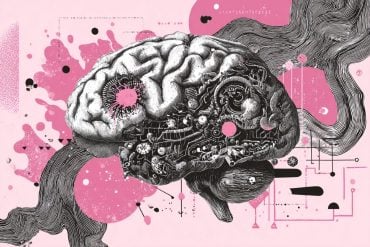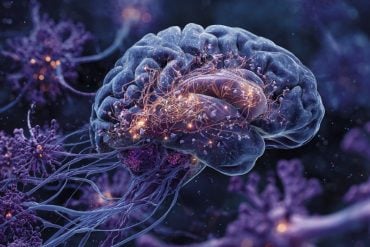Summary: New research sheds light on how the brain’s prefrontal cortex evaluates whether to persist or quit in uncertain situations. Using tasks mimicking real-life dilemmas, researchers found that different brain regions influence patience and adaptability.
Damage to the ventromedial prefrontal cortex reduced persistence, while damage to other areas impaired learning from feedback. These findings highlight the complex calculations our brains perform to weigh rewards, shedding light on behaviors tied to anxiety, addiction, and depression.
Key Facts:
- Brain Regions and Patience: The ventromedial prefrontal cortex is crucial for evaluating the value of waiting, while other regions affect adaptability in decision-making.
- Lesions and Impairment: Individuals with brain damage in specific areas showed reduced persistence or struggled to learn when quitting was the better choice.
- Broader Implications: Insights could help address conditions like addiction and depression, where persistence and reward processing are often altered.
Source: University of Pennsylvania
You’re standing at a bus stop, waiting for a ride that seems like it will never come. At first, you’re hopeful that it will be here any second. But as the minutes laggardly drag on, doubt creeps in. Should you keep waiting, or is it smarter to start walking or call for a ride?
“It’s a classic dilemma. “Do you persist with the belief that the bus is on its way, or do you cut your losses and move on to something else?” asks Joe Kable, a psychologist in the School of Arts & Sciences at the University of Pennsylvania.
The question isn’t just whether you have the patience to wait, he says.
“It’s about understanding when it pays off to stick with something and when cutting your losses is the better choice.”
Kable draws parallels to two competing ideas on perseverance: Penn professor Angela Duckworth’s bestseller “Grit,” which champions the value of persistence, and “Quit” by Penn alum Annie Duke, which explores the wisdom of knowing when to let go.
In a paper published in the Journal of Neuroscience, Kable, collaborator Joe McGuire of Boston University, and a team of researchers examine the neural underpinnings that belie one’s decision to persist or quit, “and how the brain’s executive function helps us decide when to wait or walk away.”
The research looks at individuals with damage to different parts of the prefrontal cortex, the seat of executive decision-making, revealing how the brain evaluates uncertainty and guides those split-second decisions.
These findings could bear implications for understanding and potentially treating conditions like anxiety, depression, substance abuse, and addiction, which often involve altered reward processing and persistence behaviors.
Lessons gleaned from the waiting game
Kable and his team investigated how different regions of the frontal cortex influence decisions to persist or quit using a task designed to mimic real-world dilemmas.
In the experiment, participants decided when to “cash out” coins that increased in value over time. Some coins matured quickly while others required a longer wait, depending on the task condition.
“We wanted to create a situation where persistence sometimes paid off and sometimes didn’t,” Kable says.
In the high-persistence (HP) condition, maturation times were uniformly distributed, so always waiting until the coin reached its maximum value was optimal.
In the limited-persistence condition, the maturation times followed a heavy-tailed distribution, meaning that if the coin did not mature within the first couple of seconds, it was better to stop waiting.
Participants weren’t told about these distributions, forcing them to learn from experience.
Their study had 18 controls and 31 participants with brain lesions, grouped by the affected regions of their frontal cortex.
The lesion groups included people with damage to the ventromedial prefrontal cortex (vmPFC), the dorsomedial prefrontal cortex (dmPFC), or anterior insula (AI), and a “frontal control” group with lesions in other areas of the frontal cortex.
By comparing these groups, the researchers aimed to pinpoint the specific contributions of different brain regions to persistence and quitting.
“By studying individuals with these specific lesions, we could directly test how different parts of the brain contribute to persistence versus quitting,” says Camilla van Geen, first author of the study and a Ph.D. candidate in the Kable Lab.
The team found that participants with vmPFC damage waited less overall, particularly in the HP condition where persistence was the optimal strategy.
“The vmPFC seems to play a crucial role in evaluating the subjective value of waiting,” van Geen says.
“Damage to this area doesn’t just reduce patience; it fundamentally alters how people assess whether persistence is worthwhile in the first place.”
However, participants with lesions in the dmPFC or AI showed a different pattern of impairment, Kable says. They waited about the same amount of time in both conditions, failing to distinguish between situations where persistence was advantageous and those where it wasn’t.
“It wasn’t just a matter of self-control,” Kable says.
“These participants couldn’t adjust their strategies based on feedback from the environment, particularly from experiences where quitting was the better decision.”
Van Geen also used a computational model to further analyze these decision-making processes, which revealed that the vmPFC group had a lower baseline willingness to wait, while the dmPFC/AI group struggled to learn from quit trials.
A dynamic relationship with rewards
“This isn’t just about self-control or impulsivity; it’s about how our brains estimate value and adapt in real time to decide when waiting pays off,” van Geen says.
One surprising finding was that individuals with lesions in the lateral prefrontal cortex, a region often associated with self-control, performed just as well as healthy controls.
This result suggests that while the vmPFC helps determine the baseline value of waiting and the dmPFC and AI contribute to learning from feedback, the lateral prefrontal cortex may not be as central to persistence as previously thought.
“We often think of persistence as a good thing and quitting as a failure,” van Geen says.
“But really, they’re two sides of the same coin. Both require complex mental calculations and both can be the right choice depending on the situation.”
As a follow-up, the researchers are turning their attention to neurotransmitters like dopamine and serotonin to better understand how these systems influence persistence.
“We’ve completed a study where participants take drugs that enhance these systems to see how it affects their willingness to wait,” Kable says.
“The preliminary results suggest serotonin plays a particularly interesting role, but we’re still working through the data.”
Future work will also focus on how brain regions and neurotransmitter systems interact. “Do these systems influence each other, or do they operate independently? That’s one of the big questions we’re tackling next,” Kable says.
Joseph W. Kable is the Jean-Marie Kneeley President’s Distinguished Professor of Psychology at the University of Pennsylvania’s School of Arts & Sciences.
Camilla van Geen is a Ph.D. candidate in Penn Arts & Sciences.
Other authors are Yixin Chen of Boston University, Rebecca Kazinka of the University of Minnesota, and Avinash R Vaidya of the NIDA Intramural Research Program.
Funding: The research was supported by the National Institutes of Health (grants R01-DA029149, F32-DA030870, and R21-MH124095 and award ZIA DA000642), and the National Science Foundation (Grant BCS-1755757).
About this self-control and neuroscience research news
Author: Nathi Magubane
Source: University of Pennsylvania
Contact: Nathi Magubane – University of Pennsylvania
Image: The image is credited to Neuroscience News
Original Research: Closed access.
“Lesions to different regions of frontal cortex have dissociable effects on voluntary persistence” by Joe Kable et al. Journal of Neuroscience
Abstract
Lesions to different regions of frontal cortex have dissociable effects on voluntary persistence
Deciding how long to keep waiting for uncertain future rewards is a complex problem. Previous research has shown that choosing to stop waiting results from an evaluative process that weighs the subjective value of the awaited reward against the opportunity cost of waiting.
Activity in ventromedial prefrontal cortex (vmPFC) tracks the dynamics of this evaluation, while activation in the dorsomedial prefrontal cortex (dmPFC) and anterior insula (AI) ramps up before a decision to quit is made.
Here, we provide causal evidence of the necessity of these brain regions for successful performance in a willingness-to-wait task. 28 participants (20 female and 8 male) with lesions to different regions of the frontal lobe were tested on their ability to adaptively calibrate how long they waited for monetary rewards.
We found that participants with lesions to the vmPFC waited less overall, while participants with lesions to the dmPFC and anterior insula were specifically impaired at calibrating their level of persistence to the environment.
These behavioral effects were accounted for by systematic differences in parameter estimates from a computational model of task performance.







